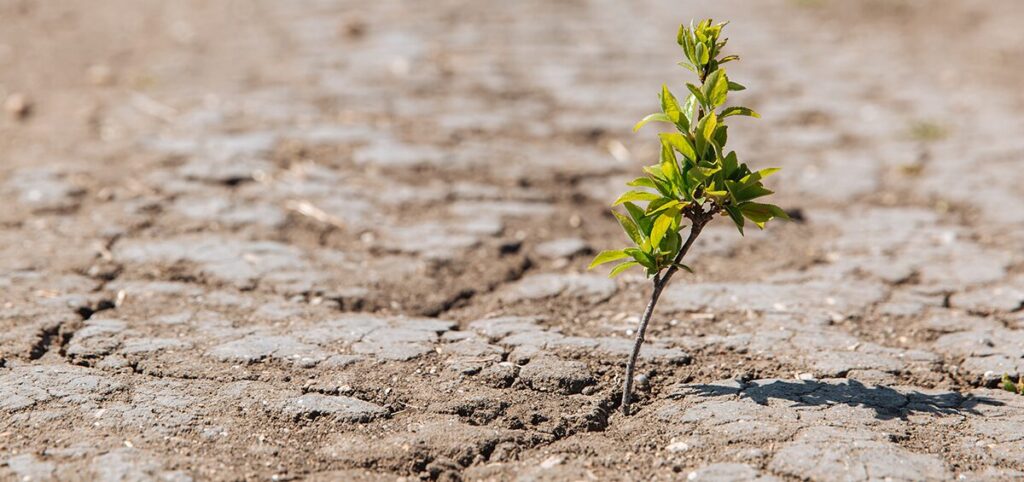Introduction
Climate change has been cited as one of the major challenges in this century; it continues to pose various adverse effects on many sectors, including agriculture. With the global climate continuing its tilt, farmers worldwide face the full brunt of unpredictable weather patterns, rising frequency of extreme events, and shifting growing zones. This blog is crippled with the aim of discussing how climate change is remolding global agriculture, accentuating some adaptation strategies and technologies deployed by farmers in pursuit of food security and sustainable agriculture.
- Weather Patterns:
This means that climate change alters the weather appreciably, changing temperatures and rainfall. This can delay the time of planting and harvesting, thus hampering crop growth and reducing the yields. For example, an increase in temperatures hastens crop maturity and sometimes leads to a shorter growth period with lower yields. Conversely, the changed pattern of rains can lead to drought or floods, which are both detrimental to crops. - Increase in Frequency of Extreme Weather Events: This will increase the occurrence and strength of weather conditions like hurricanes, flooding, drought, and heatwaves. These are discontinuous events that can cause sudden enormous losses by damaging crops, livestock, and other infrastructure related to farming. For instance, prolonged droughts may lead to a shortage of water, while highly consecutive rainfalls may erode soil and destroy crops.
- Growing Zone Changes:
The changing temperatures alter the geographical distribution suitable for growing many crops. The crops may previously have grown well in a particular region but they may no longer do so while other areas might turn out to be more conducive to growing them. This therefore requires adjusting their mix of crops and new agricultural practices. For example, some farmers in the temperate region now grow crops that are normally cultivated in warm climates. - Effects of climate change on livestock: Most of the climate change is likely to affect livestock through heat stress, changes in access to water, and altering pasture quality. The heat stress alone is responsible for reducing livestock productivity, fertility, and overall health. This is compounded by changes in precipitation, leading to changed forage availability and quality, hence affecting livestock nutrition and growth.
- Pest and disease pressure:
Warmer temperatures and shifting weather patterns can favor some pests and diseases, increasing pressure on crops and livestock. New outbreaks of pests and diseases could take place, existing ones become prevalent or more serious in their effects, thereby dealing a hard blow to agricultural productivity. Money has to be spent by farmers for the management strategies of pests and diseases. - Adaptive Strategies and Technologies:
Even with all the risks associated with climate change to agriculture, farmers worldwide are embracing a host of adaptive strategies and technologies that ensure farming resilience. Some of these are:
Climate-Smart Agriculture: CSA practices involve increasing agricultural productivity, enhancing resilience to climate change, and reducing GHG emissions. Typical examples include conservation tillage, agroforestry, and integrated pest management.
Drought-tolerant crop varieties: This would allow farmers to make do with precisely what is available and avoid the risk of loss during such periods.
Water management practices are methods that ensure maximum utilization of available water on farms by adopting techniques such as drip irrigation, rainwater harvesting, and soil moisture checking for better yields.
These precision agriculture technologies, comprising guided equipment by GPS, remote sensing, and data analysis, combine to give farmers the capability of making data-driven decisions that enhance productivity and resource efficiency.
Diversification: Changing to crops and livestock that are resilient to weather shocks can help decrease the effect of complete loss from adverse climatic occurrences. Farmers may, for example, grow a mix of crops with different sensitivities to climate or rear a range of livestock kinds. - Policy and Support:
In that case, governments and other international organizations have to play their role diligently in supporting farmers to adapt to the climate change. This shall be attained when policies encouraging sustainable agriculture, with financial incentives and investments, are translated into actual changeovers by farmers to resilient practices. Also, extension services and education programs can build farmers’ competencies and confidence to undertake adaptive strategies.
Conclusion:
In terms of its impact on agriculture across the world, climate change is profound and multi-dimensional, posing key challenges to food security and livelihoods of people dwelling in rural areas. However, with their adaptive strategies and innovative technologies, farmers worldwide can increase the resilience of agriculture to feed the growing population. This requires collaboration among farmers, policymakers, and researchers—including other stakeholders—to effectively respond to the complex, evolving challenges associated with climate change toward realizing a sustainable and secure food system for future generations.
Call to Action:
Are you a farmer or agricultural stakeholder looking to adapt to the impacts of climate change? Consider examining climate-smart agriculture practices, investing in resilience crop varieties, and tapping into precision agriculture technologies. Be sure to track policy developments and support programs that can help drive approval for wading through the challenges of climate change toward a more sustainable future for your farm.

